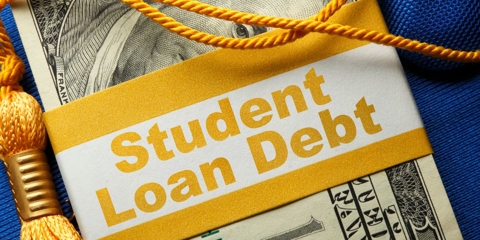Filing for bankruptcy is never an easy decision and one that usually comes after a variety of attempts to get back on track financially. Yet, after all the best efforts fall short, bankruptcy can be a necessary financial tool. Debt such as credit cards, medical bills, and personal loans can be wiped clean.
To be clear, not all debt vaporizes after bankruptcy. Debts secured by property – such as a home mortgage and car loan – must still be paid or the property will be repossessed. Another debt that does not disappear is student loans.
Having student loan debt discharged as part of bankruptcy is possible, but it requires an additional motion called an adversary lawsuit. This is a difficult process that should be guided by an attorney experienced in handling student loans in bankruptcy.
Proving Undue Hardship
Both federal and private student loans are not dischargeable in bankruptcy unless you can show that your loan payment creates an "undue hardship" on you and your family. Historically, the standard for undue hardship has been a challenging bar to meet. Claiming this hardship requires a separate motion, beyond your bankruptcy filing, with the bankruptcy court. You must appear before a judge who listens to your explanation for why your student loan should be forgiven. The ruling does not have to be all or nothing. The judge can choose to discharge a portion of the student loan debt.
Proving hardship usually includes the following:
- Repaying the loans would not allow you to maintain a minimum standard of living.
- Your hardship is unlikely to resolve during the repayment period.
- You can show good faith efforts through making past payments or arranging for forbearances.
Students Loans During the Pandemic
Required payments on all federally backed student loans have been on hold since March 2020. This reprieve has helped many who were negatively impacted financially by COVID-19. During this timeout, no late fees accrued, and the interest rate was set to 0%. Loans through commercial lenders and schools were not part of the moratorium, although many service providers have offered similar suspensions.
The federal student loan moratorium is set to expire Sept. 30.
The U.S. Education Department is the creditor for about $1.6 trillion in student loans. About 20% of student loans were delinquent before the pandemic. With the end of the payment freeze looming, that percentage is expected to grow.
Consumer Advocates Push for Reform
Student loan debt was a consistent debate topic during the 2020 Presidential election season. Bantered solutions included outright forgiveness, income-driven repayment plans, and delayed payments until the borrower reached a certain income level.
The Education Department disputes requests for bankruptcy discharges as a standard practice. Reform advocates say the department’s rigid approach runs counter to Biden’s stated desire to help struggling borrowers. Reform supporters argue that bankruptcy policy needs to be revised to better help those who genuinely struggle to make their student payments – especially now during a public health crisis.
Temporary progress has been made. The department said it will agree to any requests for a stay of proceedings until the end of the payment freeze in September. Longer-term policy changes will be challenging. Forgiving more loans could lead to cuts in the federal loan program, a consequence many want to avoid.
Student Loans in Missouri
More than 13% of Missourians have student loan debt. The average student loan debt in our state is $35,400 and our total student loan load is $28.4 million. We are above the national average in the average amount of remaining debt our residents still have.
Options for Student Loan Debt
Loan rehabilitation and consolidation programs might be an option, with each program having eligibility criteria. With both of these options, you would still be paying on the debt. Also keep in mind that consolidation programs do not remove a default, or late payments, from your credit history. Rehabilitation removes the default but not late payments from your record.
There are circumstances where bankruptcy is your best option.
Chapter 7 vs. Chapter 13
Chapter 7 bankruptcy is a liquidation while Chapter 13 is a reorganization of your debts. Neither automatically discharges student debt, but Chapter 13 may reduce the payments or stop them temporarily although interest will continue to accrue. The structure of your other debts is also an important consideration in determining which bankruptcy is best for your circumstances.
At Licata Bankruptcy Firm PC, our attorneys focus solely on bankruptcies and understand the obstacles involved in discharging student loan debts in Missouri. We believe that honest, hardworking people sometimes need help to move forward financially.
If you are wondering about how you will pay for your student loans or other debt, we offer free consultations. Call us at (417) 213-5006 or use our online contact form.



